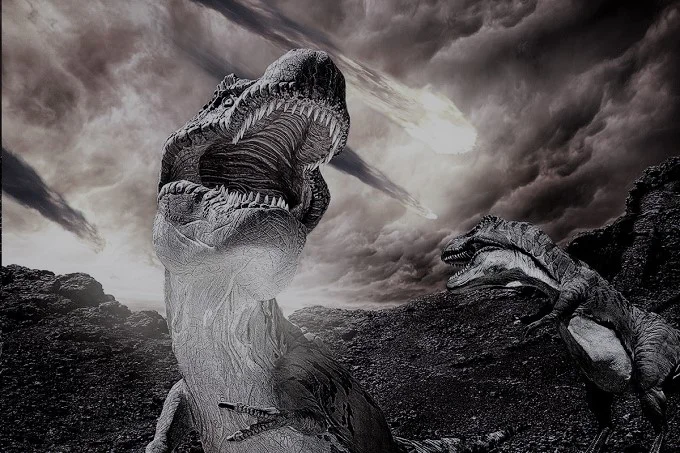The celestial body whose impact put an end to the long era of dinosaurs could not be an asteroid, but a fragment of a comet that was led astray by the attraction of Jupiter, and then destroyed by the attraction of the Sun.
Almost 66 million years ago, a large celestial body collided with the Earth. The impact formed the Chicxulub crater (Chikshulub) in modern Mexico, it led to fatal consequences for non-flying dinosaurs, launching the Cretaceous-Paleogene extinction and a new era in the history of life on the planet. The culprit was an asteroid that was about 10 kilometers across. However, the authors of a new article published in the journal Scientific Reports put forward an alternative hypothesis and named a new suspect — a comet.
The famous astrophysicist Avi Loeb and his student Amir Siraj have shown that the attraction of Jupiter can disrupt the orbits of bodies in the Oort Cloud — a vast and sparse sphere on the far periphery of the Solar System, “populated” by icy comets.
To get the latest stories, install our app here.
Computer simulations have demonstrated that, approaching the Sun, such a body could collapse under the influence of tidal forces arising when moving in the inhomogeneous gravitational field of the star.
According to Amir Siraj, when approaching the Sun, only a small part of the icy matter of comets evaporates. “But it turns out to be so close to the Sun that the part that is closer experiences a stronger attraction than the distant one. This causes the appearance of tidal forces,” explains the astronomer. Tidal destruction occurs, and large comets approaching the Sun break up into smaller ones. There are certain statistical chances of such a small comet colliding with the Earth.”
Siraj and Loeb estimate that up to 20 percent of long-period comets of the Oort Cloud can go on a trajectory of convergence with the Sun. Collisions of their fragments with the Earth can occur every 250-730 million years: these chances are an order of magnitude higher than previously thought. All this, scientists believe, suggests that the “Chicxulub asteroid” was one of these fragments, and not an asteroid of the main belt, as is usually believed.
The new hypothesis also explains some inconsistencies that have arisen in recent years during the study of the crater itself. For example, the studied samples of ancient rock indicate a very “primitive”, carbon-chondrite composition characteristic of long-period comets, but not for baptistine asteroids, which are considered the main “suspects” in the Cretaceous-Paleogene extinction.
The authors suggest that other similar giant craters (and the diameter of the Chicxulub reaches 180 kilometers) may turn out to be traces of impacts from comets, not asteroids. This includes the largest Vredefort crater on Earth in South Africa, and the Zhamanshin crater in Kazakhstan — the youngest of such objects. To get the latest stories, install our app here.
Additional studies of the substance of these craters will help confirm or refute the new hypothesis. In addition, scientists hope that the observations of new telescopes will also record the tidal destruction of comets approaching the Sun.
